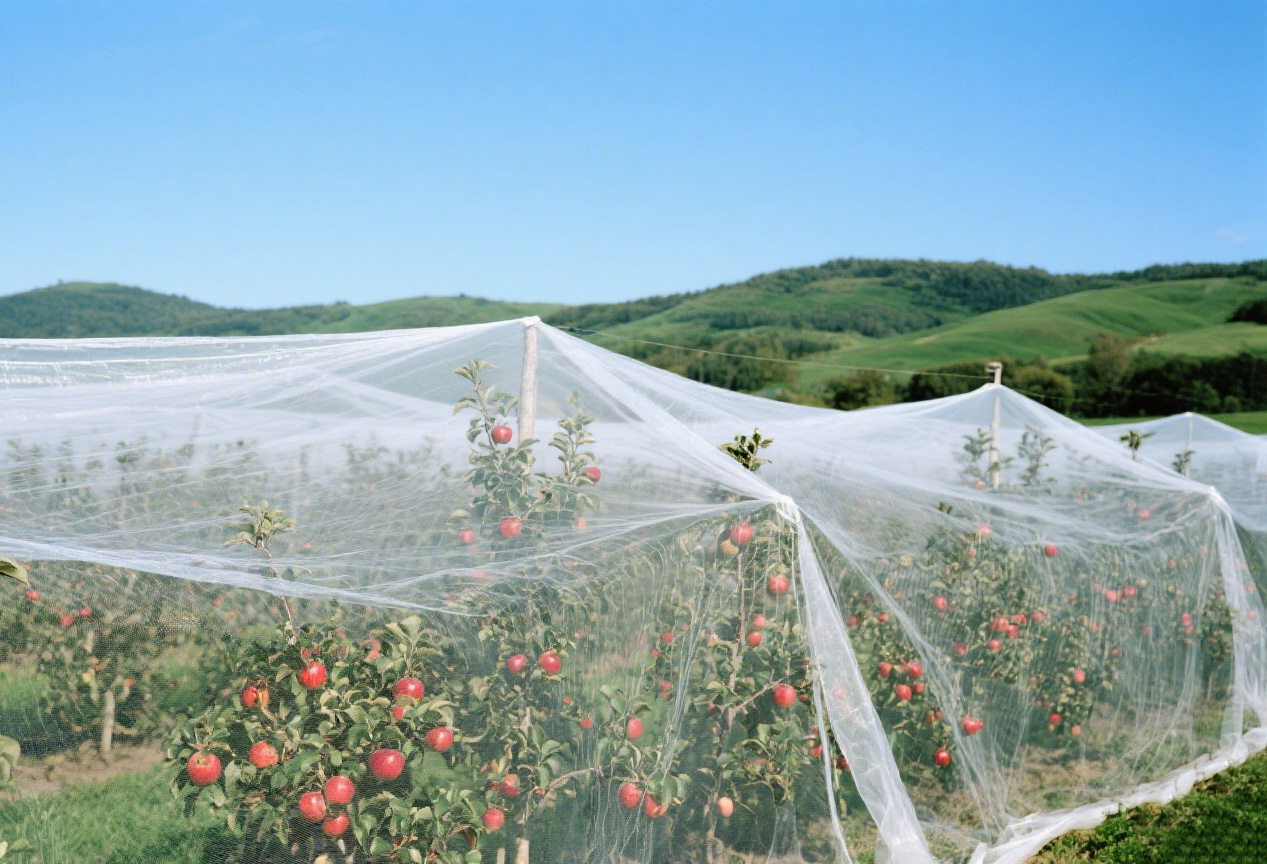Bird netting is a mesh-like protective device made from polymer materials such as polyethylene and nylon through a woven process. The mesh size is designed based on the size of the target bird, with common specifications ranging from a few millimeters to several centimeters. Colors are commonly white, black, or transparent. Some products contain UV and anti-aging agents for enhanced durability. 
The core principle of bird netting is to physically block birds from entering a specific area, preventing them from pecking, roosting, or defecating, which could harm the protected area. It is an environmentally friendly and effective bird-repellent protection method.Unlike chemical repellents or sonic bird repellents, bird netting provides protection solely through physical barriers, harmless to birds, crops, the environment, or humans, thus embracing the concept of environmental sustainability.
As long as the netting is intact, it continues to function, regardless of weather or time. Compared to traditional bird-repellent methods (such as scarecrows, which are easily adapted), its effectiveness is more stable and long-lasting. Highly adaptable and flexible: It can be flexibly cut and constructed to suit the size and shape of the protected area, making it suitable for various scenarios. It is lightweight, easy to carry, and convenient to install and remove, making it reusable.
High-quality bird netting is UV-resistant, acid- and alkali-resistant, and abrasion-resistant. It can withstand wind, sun, and rain in outdoor environments, with a service life of up to 3-5 years, offering excellent value for money.In addition to bird deterrence, some high-density bird-proof netting can also block the entry of small mammals (such as hares) and insects (such as cabbage worms), while also reducing the direct impact of hail and heavy rain on crops.
Bird netting is installed in orchards of apple, cherry, grape, and strawberry crops to prevent birds from pecking at the fruit, reducing fruit breakage and drop, and ensuring fruit yield and quality.
It is used to protect crops such as rice, wheat, and rapeseed during their ripening period to prevent birds from pecking at seeds or grains. It is particularly suitable for fields with frequent bird activity. Used in greenhouses or open-air vegetable farms, bird netting protects vegetables such as peppers, tomatoes, and cucumbers from birds and prevents bird droppings from contaminating the vegetables.
In fish ponds, shrimp ponds, crab ponds, and other aquaculture areas, bird netting can prevent waterfowl such as egrets and kingfishers from preying on fish, shrimp, and crabs, reducing losses and increasing survival rates.In parks, green belts, and nurseries, bird-proof netting can be used to protect seedlings, flowers, or rare plants, preventing birds from pecking at tender shoots, flowers, or fruits, ensuring normal plant growth.
Used to prevent birds from approaching runways, reducing the safety hazard of bird strikes on aircraft.
Covering the eaves and brackets of ancient buildings prevents birds from roosting, nesting, and defecating, which can cause corrosion or contamination.
Due to their environmentally friendly, efficient, and flexible nature, bird-proof netting has become an indispensable protective tool in agriculture, aquaculture, and landscaping, playing a vital role in balancing ecological protection and production needs.
Post time: Aug-11-2025

